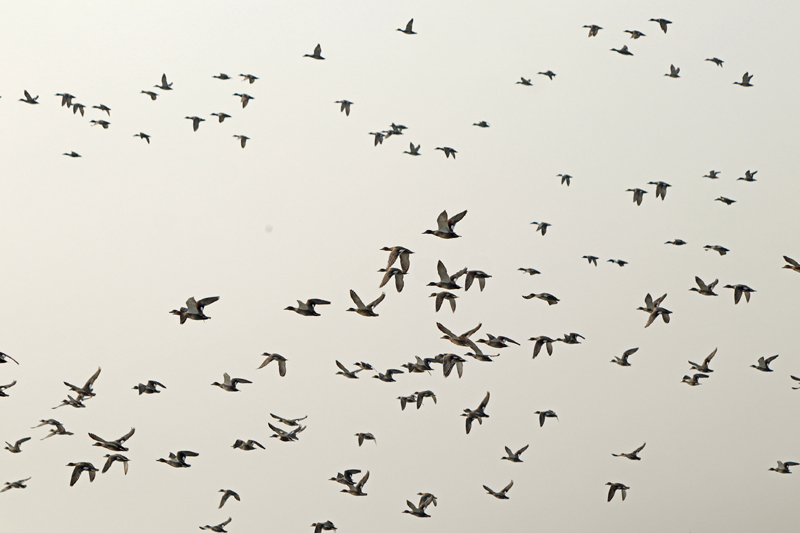Suhail Bhat
Srinagar, Dec 15: The wetlands of Kashmir are filled with the constant tweeting of more than five lakh migratory birds that have flown in from all over the world to spend the cold months in the Valley’s slightly warmer temperatures.
According to the Department of Wildlife, nearly five lakh avian visitors have already arrived in the Valley and the number is expected to rise in the coming months. These avian visitors travel to the wetlands of the Valley from their native habitats in Siberia, Northern Europe, and Central Asia in order to avoid the harsh winter.
The birds typically start their journey before the start of the winter season, fly thousands of miles, and pass through several countries to arrive here. Beginning in October, birds begin to stream into Kashmir’s wetlands, and by the end of February, the wetlands are bustling with a variety of vibrant and intriguing bird species.
“By March, the wetlands are teeming with these birds. They travel to Kashmir’s wetlands from the world’s coldest places, including Siberia, China, and Central Asia. They stay in our various protected wetlands and other water bodies for about six months,” Ifshan Dewan, Wildlife Warden, Wetlands Kashmir, told Excelsior.
She said that they anticipate receiving the same 60-70 bird species this year as they have in previous years. “Our annual bird census, which we do in February, has shown that between 60 to 70 different bird species visit this area each year. However, we are unable to foresee the arrival of new species,” she added.
She said that according to data from the yearly Asian waterfowl census, which they conduct with the help of several universities, NGOs, and bird-watching organizations, the wetlands receive almost 10 lakh birds during winters. “When the water freezes owing to a dip in temperature, these birds spread to other Indian lands,” she said.
Between flights, these birds rest at nine wetlands, including Hokersar, Hygam, Pampore and Bandipora. Overall, the department reports that Hokersar receives the most visits. Among the other wetlands, the Chatlam Wetland in the Pampore, which is tucked between saffron fields and Zabarwan hills, is also bustling with bird visits.
The locals said that more visitors have been arriving at the wetland since the 2014 floods. “In 2014, just 50 species visited, but today there are 90. The birds have lifted people’s spirits and give them optimism that the area may one day become a popular tourist attraction…,” a local said.
Wildlife shooting, which is prohibited in Jammu and Kashmir, is looming as a major problem for the department due to a staff shortage, as it had in previous years. “In every protected wetland and water body, including Shalbugh, Hygam, Dal, Wular, Hoker, and Pampore Wetland, we have installed anti-poaching control rooms. Due to a manpower shortage, we have established joint control rooms with the forest protection force. The control rooms work 24 hours a day, and if we obtain information about any poaching instances, our staff conducts raids there immediately to address the violation,” she said.
Asked about the lack of birds in the Shalbugh wetlands, Dewan said, despite the fact that there are fewer birds in Shallbug, they have taken the necessary steps to keep the water level there at its ideal level. “Since some birds love deep water and others prefer shallow water, we have the ideal water level in all of the channels that we have designed,” she said.
However, a department official stressed that poachers who kill migrating birds outside of wetlands areas that are not fully protected by personnel put them in constant danger. “We are unable to completely cease the practice due to a lack of staff. Because they have no sense of limits, the birds occasionally leave the marshes where poachers are killing them. We are unable to fully control the practice due to a lack of staff,” he said.
Trending Now
E-Paper


